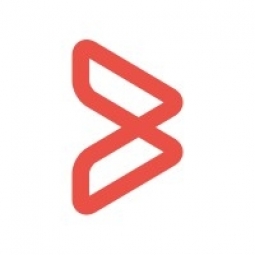公司规模
Large Corporate
地区
- America
国家
- United States
产品
- Compuware Topaz
- Jenkins
- SonarSource
技术栈
- Mainframe
- Java
- Agile Development
实施规模
- Enterprise-wide Deployment
影响指标
- Productivity Improvements
- Digital Expertise
技术
- 应用基础设施与中间件 - API 集成与管理
适用行业
- 金融与保险
适用功能
- 离散制造
- 产品研发
用例
- 自动化制造系统
- 预测性维护
服务
- 软件设计与工程服务
- 系统集成
关于客户
Ameritas 是一家互助人寿和健康保险公司,资产规模达 356 亿美元。该公司希望在日益数字化的市场中获得竞争优势。然而,其约 70% 的开发人员专注于大型机,这对速度和敏捷性提出了挑战。该公司需要更新其在大型机上的开发流程,并采用更好的流程和工具,使其开发人员能够以相同的敏捷方式跨语言和平台工作。这将使 Ameritas 能够更好地完成其雄心勃勃的使命,同时避免重新平台化其大型机应用程序和数据的成本、中断和风险。
挑战
Mike Wells 是 Ameritas 的软件开发总监,Ameritas 是一家拥有 356 亿美元资产的互助人寿和健康保险公司,他的任务是帮助该公司在日益数字化的市场中获得竞争优势。然而,他面临着一个重大挑战。Wells 的大部分软件开发经验都集中在分布式平台上;然而,他在 Ameritas 的开发人员中约有 70% 专注于大型机。由于他的背景是自动化和可视性是每个 Java 开发人员的首要任务,他意识到这在大型机领域是一个挑战。Wells 怀疑他们的工具和流程是否能提供 Ameritas 在快速发展的数字市场中蓬勃发展所需的速度和灵活性。
解决方案
Wells 突然意识到,为全球 Java 团队提供自动化、可视性和代码质量洞察的工具和流程也可以帮助实现大型机开发流程的现代化。通过积极采用更好的流程和更好的工具,他和 Ameritas 迅速成为大型机“主流化”的领先实践者——这使开发人员能够以相同的敏捷方式跨语言和平台工作。因此,Ameritas 可以更好地完成其雄心勃勃的使命,同时避免重新平台化大型机应用程序和数据的成本、中断和风险。Wells 还推动了开发人员生产力和软件质量的大幅提高。Wells 在大型机工作中的主要合作伙伴是 Compuware,该公司为他提供技术、见解并倾听他的创新想法。
运营影响
数量效益

Case Study missing?
Start adding your own!
Register with your work email and create a new case study profile for your business.
相关案例.

Case Study
Real-time In-vehicle Monitoring
The telematic solution provides this vital premium-adjusting information. The solution also helps detect and deter vehicle or trailer theft – as soon as a theft occurs, monitoring personnel can alert the appropriate authorities, providing an exact location.“With more and more insurance companies and major fleet operators interested in monitoring driver behaviour on the grounds of road safety, efficient logistics and costs, the market for this type of device and associated e-business services is growing rapidly within Italy and the rest of Europe,” says Franco.“The insurance companies are especially interested in the pay-per-use and pay-as-you-drive applications while other organisations employ the technology for road user charging.”“One million vehicles in Italy currently carry such devices and forecasts indicate that the European market will increase tenfold by 2014.However, for our technology to work effectively, we needed a highly reliable wireless data network to carry the information between the vehicles and monitoring stations.”

Case Study
Safety First with Folksam
The competitiveness of the car insurance market is driving UBI growth as a means for insurance companies to differentiate their customer propositions as well as improving operational efficiency. An insurance model - usage-based insurance ("UBI") - offers possibilities for insurers to do more efficient market segmentation and accurate risk assessment and pricing. Insurers require an IoT solution for the purpose of data collection and performance analysis

Case Study
Smooth Transition to Energy Savings
The building was equipped with four end-of-life Trane water cooled chillers, located in the basement. Johnson Controls installed four York water cooled centrifugal chillers with unit mounted variable speed drives and a total installed cooling capacity of 6,8 MW. Each chiller has a capacity of 1,6 MW (variable to 1.9MW depending upon condenser water temperatures). Johnson Controls needed to design the equipment in such way that it would fit the dimensional constraints of the existing plant area and plant access route but also the specific performance requirements of the client. Morgan Stanley required the chiller plant to match the building load profile, turn down to match the low load requirement when needed and provide an improvement in the Energy Efficiency Ratio across the entire operating range. Other requirements were a reduction in the chiller noise level to improve the working environment in the plant room and a wide operating envelope coupled with intelligent controls to allow possible variation in both flow rate and temperature. The latter was needed to leverage increased capacity from a reduced number of machines during the different installation phases and allow future enhancement to a variable primary flow system.

Case Study
Automated Pallet Labeling Solution for SPR Packaging
SPR Packaging, an American supplier of packaging solutions, was in search of an automated pallet labeling solution that could meet their immediate and future needs. They aimed to equip their lines with automatic printer applicators, but also required a solution that could interface with their accounting software. The challenge was to find a system that could read a 2D code on pallets at the stretch wrapper, track the pallet, and flag any pallets with unread barcodes for inspection. The pallets could be single or double stacked, and the system needed to be able to differentiate between the two. SPR Packaging sought a system integrator with extensive experience in advanced printing and tracking solutions to provide a complete traceability system.

Case Study
Transforming insurance pricing while improving driver safety
The Internet of Things (IoT) is revolutionizing the car insurance industry on a scale not seen since the introduction of the car itself. For decades, premiums have been calculated using proxy-based risk assessment models and historical data. Today, a growing number of innovative companies such as Quebec-based Industrielle Alliance are moving to usage-based insurance (UBI) models, driven by the advancement of telematics technologies and smart tracking devices.

Case Study
MasterCard Improves Customer Experience Through Self-Service Data Prep
Derek Madison, Leader of Business Financial Support at MasterCard, oversees the validation of transactions and cash between two systems, whether they’re MasterCard owned or not. He was charged with identifying new ways to increase efficiency and improve MasterCard processes. At the outset, the 13-person team had to manually reconcile system interfaces using reports that resided on the company’s mainframe. Their first order of business each day was to print 20-30 individual, multi-page reports. Using a ruler to keep their place within each report, they would then hand-key the relevant data, line by line, into Excel for validation. “We’re talking about a task that took 40-80 hours each week,” recalls Madison, “As a growing company with rapidly expanding product offerings, we had to find a better way to prepare this data for analysis.”



